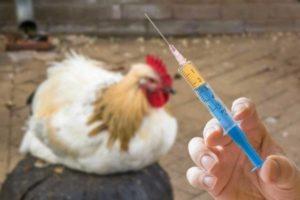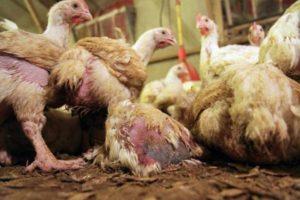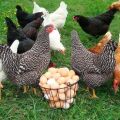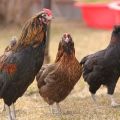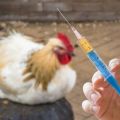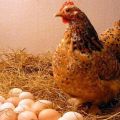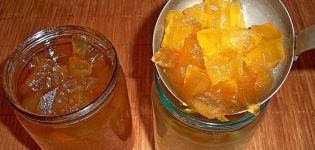Description and forms of Newcastle disease in chickens, symptoms and treatment
Bird breeding is time consuming. Birds often succumb to various infections and viruses. One of the most severe pathologies is Newcastle disease in domestic chickens.
To prevent the development of the disease, to save the livestock, you should familiarize yourself with its features.
What is Newcastle disease?
Newcastle disease is an acute, highly contagious disease of birds caused by viruses, hemorrhagic diathesis phenomena. The digestive tract, respiratory tract and central nervous system are affected. Waterfowl are not susceptible to pathology.
Death occurs in 80% of cases. The virus may spread to nearby farms, people.
Forms of the disease
Newcastle disease is acute, the clinical picture is easily recognized. There are 4 forms of the pathological process, differing in the intensity of the symptoms, the scale of the damage. Young hens are more dangerous.
Scourge Form
An acute form of infection of viral etiology, leads to the death of almost all chickens. Symptoms include coughing and trouble breathing. The conjunctiva of the eyes becomes inflamed.
Doyle's form
The form of Newcastle Doyle's disease is experienced by birds the most difficult, they lose their appetite, muscle spasms, weakness, accumulation of mucus in the nasal passages appear. Chickens often go blind, paralysis of the limbs occurs.
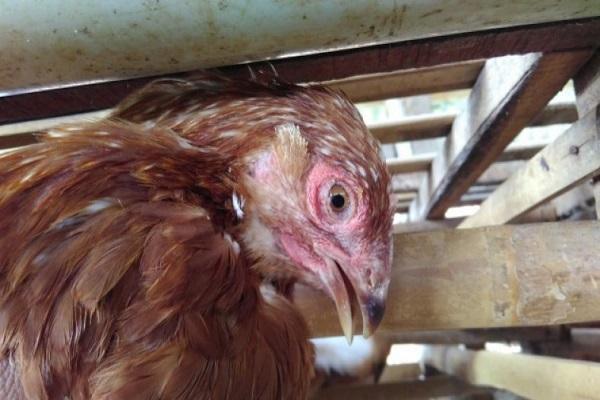
Bodette shape
Compared to previous forms, this one is lighter. With successful treatment, 2/3 of the population is saved. Young chickens carry the disease more severely than adults, often die after serious damage to the central nervous system. The form is used to make a live vaccine.
Hitchner's form
The mildest form is Hitchner, birds lose their appetite, become weak, overall performance decreases. Due to its low virulence, the variety is used to create most of the vaccines. Death is rare.
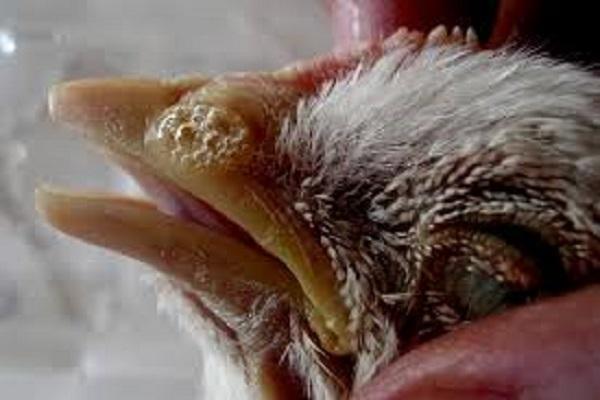
Is Newcastle disease dangerous for people?
Adults do not threaten Newcastle's pathology, but infection is possible when interacting with a sick bird, since the virus is transmitted by airborne droplets. You can also get infected by rubbing your eyes with dirty hands. The incubation phase for humans lasts 1 week. The symptoms are similar to the first manifestations of the flu. Hyperthermia, runny nose, general weakness in the body begin. In more rare cases, diarrhea and conjunctivitis occur.
Prevention includes thorough hand washing after working in a chicken coop, refusal to consume raw eggs for food, putting on a mask when vaccinating.
The virus is dangerous for children, but such cases are rare. Severe Newcastle disease causes brain damage.
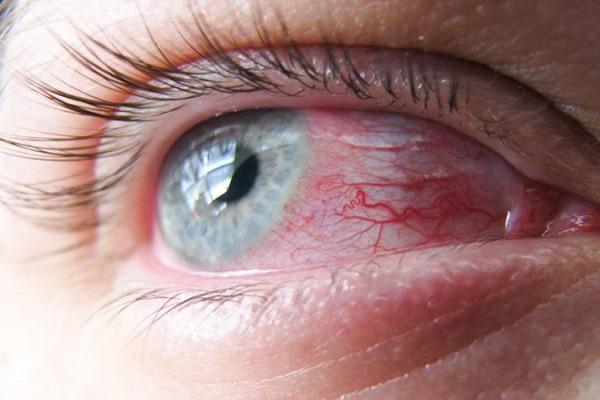
Causes of occurrence
Sources of pathogens for Newcastle disease include infections. 2 days after infection and a day before the onset of symptoms, the virus is released during breathing and coughing, with expiration from the oral cavity, feces, eggs.
Among the possible causes of the development of Newcastle disease, the following circumstances are distinguished:
- non-observance of sanitation in the chicken coop;
- lack of vaccination of birds;
- contact of domestic individuals with wild birds, no distinction in the form of a poultry house.
The carriers of pathogenic agents can be passive-immune chickens infected from birth and adults with low protective properties.
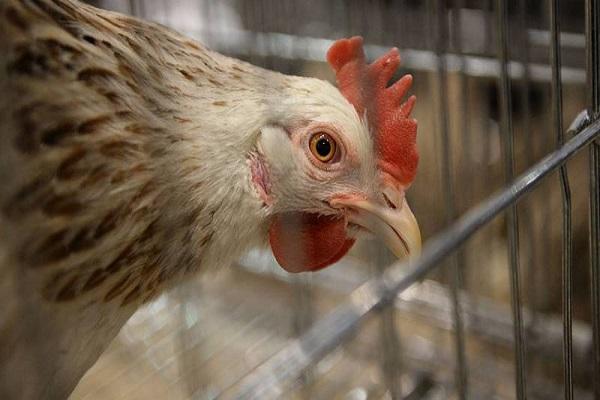
Signs and symptoms of Newcastle disease
In chickens, the incubation period lasts 3-6 days, the symptoms are varied, depending on the form of pathology and the stage of its development.
The main manifestations of Newcastle disease include:
- refusal to feed;
- decreased activity;
- lack of response to sounds;
- hyperthermia up to 44 degrees;
- conjunctivitis and clouding of the eye mucosa;
- increase in goiter, discharge of a fetid exudate from the beak;
- diarrhea of a green tint with mucous impurities, sometimes bloody streaks;
- breathing problems - beak open, chickens cough, sneeze, stretch their necks, wheeze.
In an acute course, birds die in 2 days. When the nervous system is damaged, coordination is disturbed, the chickens walk in a circle, tremors, convulsions, paralysis of the wings, twisting of the neck are noted. Death occurs in 3-12 days.
When the bird recovers, it remains a source of infection for 2-4 months. It is necessary to isolate the cured individuals from healthy chickens for this period..
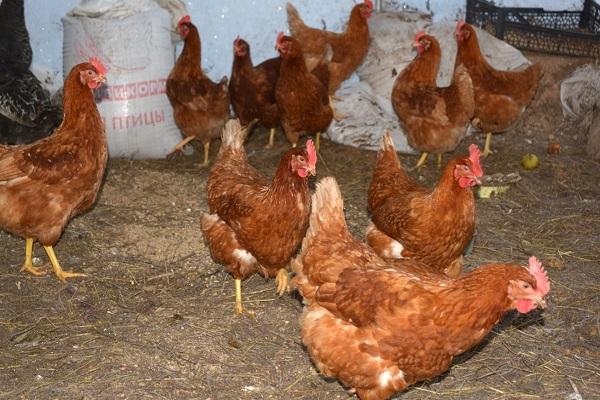
Diagnosis of the disease
To establish a diagnosis, you need the results of clinical and pathological studies using laboratory tests. The spread of infectious agents to nearby territories is also taken into account. A veterinarian is called to the site, you cannot independently establish a verdict based on symptoms.
How pathology is treated
No therapeutic regimen for Newcastle disease has been invented. The poultry house only has to stop the spread of the virus. The following complex of manipulations is carried out.
- All excrement is removed from the chicken coop and burned.
- The room is treated with caustic soda, formalin solution, carbolic acid and alcohol.
- Sick individuals are killed, cremated.
After processing, the chicken coop is closed. When the quarantine is completed, the premises are chemically treated. Sometimes the veterinarian prescribes antibacterial agents that are given to isolated, sick chickens. The success of therapy is doubtful, depending on the stage, form of the pathological process.
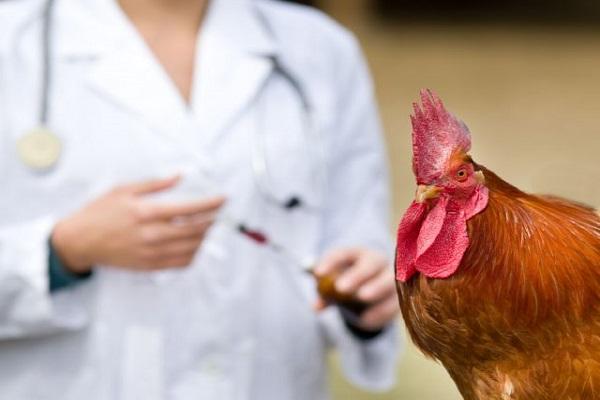
It is forbidden to carry out such events:
- take out birds, their eggs;
- to sell the meat of a dead bird, its down and feathers.
It is necessary to close access to the territory for unauthorized people.
Possible consequences
In the absence of treatment, the livestock dies, the virus spreads to nearby birds. Children can become infected, the health of adults will worsen. When new chickens are brought into the house, they also become infected with the virus because the house has not been treated.
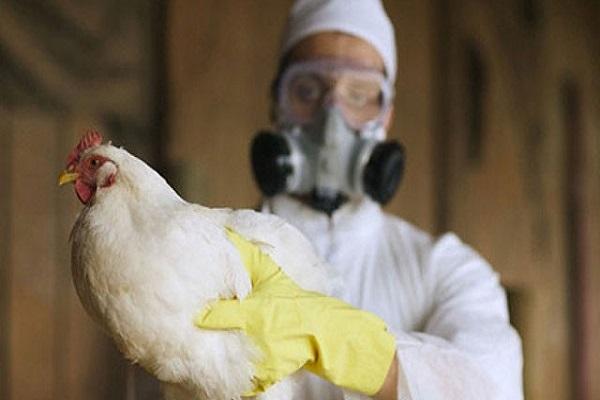
Prevention of occurrence
On poultry farms, chickens are vaccinated. Chicken coops are disinfected about 2 times a year. The Newcastle disease virus is susceptible to 2% sodium hydroxide solution, 3% bleach.
Purity
The house should be cleaned once a week. It is important to carry away all feces, fallen feathers, burn them.
Disinfection
The poultry house should be periodically disinfected with ultraviolet rays, lamps should be installed in it. They also resort to quartz. Disinfection should be carried out once every 2 weeks.

Quarantine
The poultry farm is closed for quarantine for a period of 1 month. Notify the local authorities, the veterinary service, supplier farms and partners about viral infection of the livestock. Poultry farms are fenced off, blocking access to third parties. The supply of birds is suspended, trade is stopped. They destroy diseased individuals by suffocation, a bloodless method is required. To exclude the spread of viral agents, when killing birds, close all windows, doors, hoods.
Corpses are burned in pits 0.7 meters deep or in ovens. The inventory and the place of burial are disinfected. Healthy individuals are kept in isolation, vaccinated. Before the end of the quarantine, the house is disinfected. Metal equipment is not resistant to chlorine and alkali. Their processing is carried out with formalin, wet or aerosol. When a massive death of birds occurs from Newcastle disease, quarantine is established for 5 days. During this time, they destroy all individuals, do a complete disinfection of the dangerous contamination of the territory.
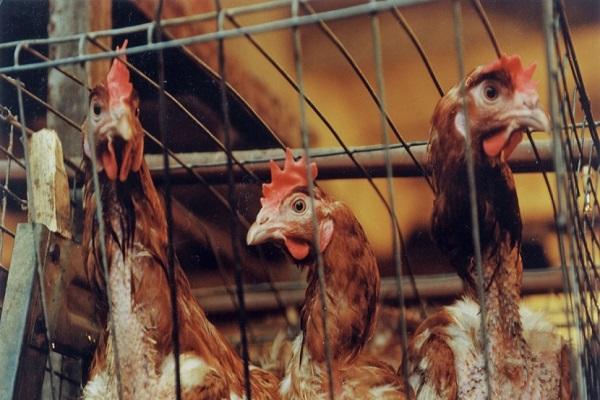
Vaccination of chickens
Chickens are immunized with vaccines based on live or inactivated viral strains. The choice of the drug depends on the age of the bird, the well-being of the area, the direction of the farm.
There are such features of different types of vaccinations:
- inactivated - the manipulation is carried out when the hens reach the age of 120 days, the duration of immunity protection is 6-12 months;
- live - weakened viral agents are used in pathologically unsuccessful areas - the north of the Caucasus, the south, the drugs are prepared from the La Sota or Bor-74 strain.
After vaccination, the birds develop antibodies within 3 months. Mostly young chickens are vaccinated at 15 days. Young growth of egg breeds are vaccinated again from 2 months. The effectiveness of the formation of the immune response is due to the conditions of detention and the quality of nutrition of chickens, the method of inoculation.
